
Today I’d like to share a helpful “field report” that was posted in our forums recently.
The report came in from Bill Hosay of DataVisual Controls, LLC, and if you’d like to see his original post you can read it here.
Bill’s story starts back in July 2018, when he sat down with Rockwell’s product manager and OEM specialist to discuss details of the changes to the MicroLogix 1400 Series C.
At the time he was assured that commissioning and recovery methods would be same between the series B and C, with only the location of the password changing.
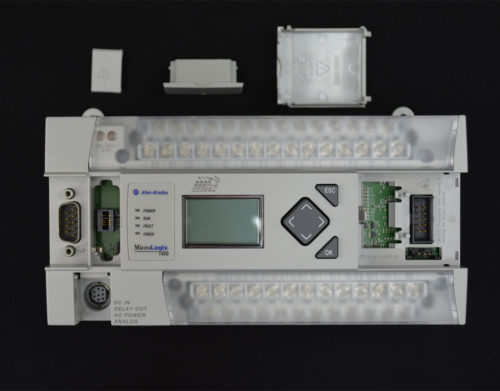 A quick check of the current versions of Rockwell’s MicroLogix 1400 Release Notes and User Manual provide the very same information (As of today, 3/12/19, the latest version of each document is July, 2018.)
A quick check of the current versions of Rockwell’s MicroLogix 1400 Release Notes and User Manual provide the very same information (As of today, 3/12/19, the latest version of each document is July, 2018.)
For those who don’t know, Memory Modules are used to hold a backup of the PLC’s program, and can be set to automatically load on power-up, or if the PLC’s program is missing or corrupt.
While many End Users use memory modules as a means of safely backing up PLC programs, OEMs often use them to quickly commission identical controllers, as well as to provide end users with updated PLC code that can be loaded without the need of a PC and Programming Software.
With that in mind, understanding how the implementation of passwords changed in the MicroLogix 1400 with Series B FRN 21 and Series C, is important to those End Users and OEMs who have implemented password protection.
As Bill put it in his post, “if you’ve been using latest MicroLogix 1400 Series C (or B with v21) and you’re using the MM1 module with ML1400 password set, STOP doing this! I verified with Rockwell a few weeks ago that an MM1 with a password WILL NOT COMMISSION a NEW or USED MicroLogix 1400.”
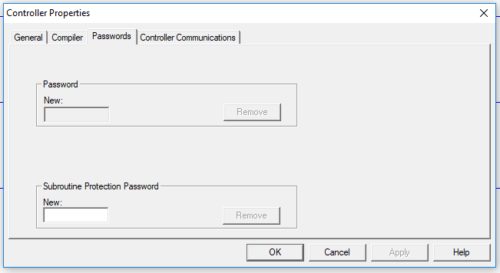 At the core of the problem is the fact that you can’t use a passworded MM1 in these newer 1400s unless the 1400 already has the same password… not very likely if you’re replacing a failed unit with one out of the store room, or off a vendors shelf.
At the core of the problem is the fact that you can’t use a passworded MM1 in these newer 1400s unless the 1400 already has the same password… not very likely if you’re replacing a failed unit with one out of the store room, or off a vendors shelf.
As Bill put it, “This means OEMs would need to provide end-users with a spare MicroLogix 1400 pre-loaded with the OEMs passworded program, OR a blank program with the same password as the OEMs program, in order for them to use a pre-configured and passworded MM1.”
Not very useful.
So what’s the workaround if you find yourself in this position? Thankfully Bill shared one with us.
According to Bill, you first need to change the MicroLogix 1400 Processor in your Series Bv21 or C program to the, “NON-ENHANCED PASSWORD SECURITY version, which is currently the middle selection of MicroLogix 1400s available (ML1400 Series B):”
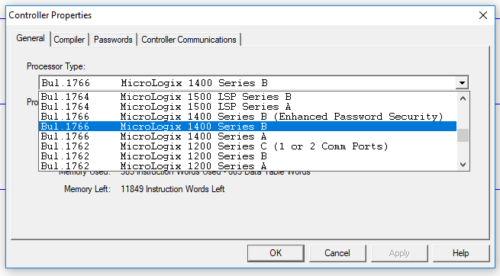 “This will make the series C hardware function like B, with 3 passwords that can be used. Note that you can’t actually flash your series C to series B, but you should have no issues changing the processor type from ENHANCED PASSWORD SECURITY back to B in RSLogix:”
“This will make the series C hardware function like B, with 3 passwords that can be used. Note that you can’t actually flash your series C to series B, but you should have no issues changing the processor type from ENHANCED PASSWORD SECURITY back to B in RSLogix:”
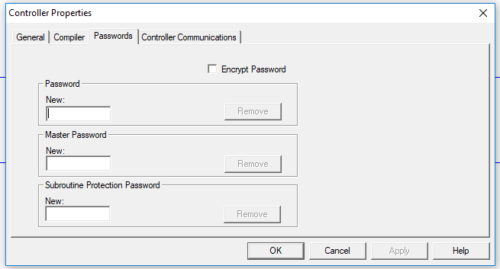 Bill also provided some additional notes which I’ll include below:
Bill also provided some additional notes which I’ll include below:
– The MicroLogix 1400 Series C stores password in the HARDWARE, which prevents ONLINE Access & Downloads.
– The MicroLogix 1400 Series B stores all passwords in the offline .RSS file, which can be viewed if one knows how.
– Another workaround this issue is to use a SUBROUTINE password for code protection, as this password is stored in the offline file in both Series B and C, and if “encrypted” is checked it will prevent offline file hacking from relieving the password. Another reason for recommending SUBROUTINE passwords is that anyone can view a password SERIES C file offline since the Series C password is stored ONLINE.
In summary, Bill points out (and I confirmed) that nowhere in Rockwell’s manuals or documentation does it state that you don’t need to use MM1 memory modules with password protection to protect your program if you’re using MicroLogix 1400 Series C.
Bill also shared one final note, saying that while this issue effects password protected MM1’s, if you’re not using passwords the MM1 still works as advertised in the Series C (or Series B FRN 21) MicroLogix 1400.
If you’d like to see Bill’s original post you can read it here, where you can also add your own comments.
Until next time, Peace ✌️
If you enjoyed this content, please give it a Like, and consider Sharing a link to it as that is the best way for us to grow our audience, which in turn allows us to produce more content 🙂
Shawn M Tierney
Technology Enthusiast & Content Creator
Support our work and gain access to hundreds members only articles and videos by becoming a member at The Automation Blog or on YouTube. You’ll also find all of my affordable PLC, HMI, and SCADA courses at TheAutomationSchool.com.
- FactoryTalk Design Workbench First Look, CCW Comparison - December 19, 2025
- Drew Allen of Grace Technologies on Automation, Safety, and More (P256) - December 17, 2025
- Robotics in Warehouse Automation with Erik Nieves of Plus One Robotics (P255) - December 10, 2025

Discover more from The Automation Blog
Subscribe to get the latest posts sent to your email.


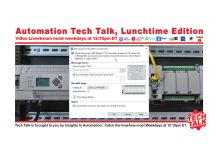


Hi , how plc micrologix 1400 can work without memory module? I transfer user program to prossesor and memoru module but i want to remove memory module. how can i do this?
The MicoLogix 1400 like other PLCs has an optional Memory Module which acts like a EEPROM or Flash Memory card.
And like other PLCs, the ML1400 can be set to never load from it, always load from it, or only load if the internal memory is corrupted.
Connect to your ML1400 with RSLogix Micro or RSLogix 500 and check out the memory section of the status file.
For more info check out these articles:
https://theautomationblog.com/how-to-setup-rslinx-and-download-to-a-micrologix-1400/
https://theautomationblog.com/field-report-memory-module-issues-with-new-micrologix-1400s/
Good luck!
Shawn Tierney,
Instructor, The Automation School
[sc name="stsigcom"]